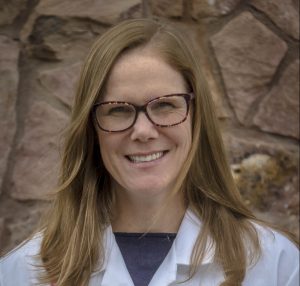
14 Aug San Miguel County: Back to School 101
The following is an important note from Dr. Sharon Grundy, County Medical Officer, and Grace Franklin, County Public Health Director. Scroll way down for a series of helpful links.

Dr. Sharon Grundy, Telluride Med Center & County Medical Officer

Grace Franklin, County Public Health Director.
It seems like years, but it was only a little more than five months ago when the state of Colorado documented its first case of COVID-19. Needless to say, it’s been a challenging journey for all of us and, as we gear up for back to school, the challenges we face in County Public Health have a new and elevated weight of responsibility. After all, what is more important than our children and their health, safety, and education?
More than 15% of our county residents have school-aged children in their household. The responsibilities and decisions the parents of our nearly 1,300 students are facing are difficult at best. No matter what plan your school rolls out, not everyone will be on board. Our goal is to help the schools and parents make informed decisions, while balancing risks to the physical, mental, and financial health of our children and our community. And so, we want to share with you sources and data we are using in consultation with school administrators.
Our main sources of data include the Centers for Disease Control and Prevention, the Colorado Department of Public Health and Environment, Colorado Department of Education, Johns Hopkins University, and regular communication with leading epidemiologists. Most of these resources are available to you, and we encourage you to check them out on the links below.
The newest concept or data point introduced by Colorado officials regarding the re-opening of schools is the COVID “test positivity rate.” This metric measures the percentage of those tested who test positive. It helps determine disease prevalence, rate of spread, and thereby becomes a risk factor metric in the back to school model.
Each week, around 8% of San Miguel County’s 8,000 residents (and some visitors) get tested, about 160 people. Our current rate of positivity is about 4%, meaning out of every 100 people tested, we see 4 people with positive results. In some hard-hit states, the rate of positivity is up to 10%. Schools in New York want to see a positivity rate of less than 3% to have students return to the classroom, while nationally, resources have stated the figure of less than 5% for schools to safely reopen.
We are also looking specifically at the rate of spread in Colorado and in our county. The virus’ reproductive number is called the R-0 (or R-naught). The goal with infectious diseases, including COVID is to drive down the number of people that an infected person infects (the R-0), protect those who are at high risk of complications, and maintain a health care system to support people who need medical intervention. The virus appears to be spreading in Colorado at an R-0 value of 2.5, meaning one person on average infects 2.5 people. This number will go up or down depending almost exclusively on our behaviors. This is why we keep driving home the importance of the Five Commitments: maintain social distancing; wash your hands; wear face coverings; limit group sizes; and stay home when sick and get tested.
Local and state trends are also a valuable metric. It takes approximately 2 weeks to see a trend, the impact of a new order, or sweeping change. When we opened our economy in early June, we soon saw a steady uptick in cases. That was to be expected. The upward trend in cases appears to have peaked between July 14th and July 24th. Since then, we’ve seen a downward trend of cases, perhaps due to the local and state mandates regarding face masks and the fact that we did not fully open our lodging, restaurants and bars, or increase our social gathering limits as allowed by the state.
In any event, we know our behavior matters. It’s difficult, but reasonable and achievable for us to integrate the Five Commitments into our everyday lives. They are proven measures that are the backbone of our community’s health, and critical to the successful reopening of schools.
The return of students to the classroom is similar to reopening our businesses with one very important difference. We have four school buildings that would be filled with more than 1,300 kids, and dozens of staff, for more than six hours a day. That’s a much higher concentration of people from your workplace that poses an elevated risk.
When we open our classrooms, we expect to see some new school-related cases. We need to be able to maintain a flattened curve in order to sustain the expected impact of back to school. What we don’t want to see is a sharp uptick in cases that would pose health risks to children and staff, and our community.
It appears children have a different rate of infection than adults. Researchers have found that younger children may lack a certain receptor that allows COVID to attach to the lining of children’s noses and throats. We think this also lowers (but does not eliminate) the risk of children carrying the virus and infecting others.
The guidelines for having children in the schools include using small cohorts of children, limit the rotation of teachers to around three, limit large gatherings, and have parents keep children with any symptoms home. Staggering the return of children to the classroom starting with Elementary school-aged students may be a good starting point. This will help minimize “mingling,” and get our youngest students in a structured class environment sooner rather than later. Some staff may need to teach virtually for their own safety. With these guidelines in mind, school administrators will decide based on their enrollment, faculty, and facility, how to best proceed. We support the superintendents, teachers, students and parents and respect the decisions you each make as we start the school year.
We know these decisions are difficult for everyone. We all have the best interest of our students and their teachers paramount in our minds.
COVID has already forced us to make adjustments in how we work and play. Now it’s going to impact how we educate our children. In addition to re-committing to best practices and the Five Commitments, we ask for your patience, respect, and flexibility as we enter school season. Be patient with your school officials, teachers, and your student. Respect the fact that you may have different opinions than that of your friends and co-workers. And finally, please be flexible. We need to be ready to change and adapt in the best interest of our children and our community. If we go into the school year supporting our students, their teachers and administrators, we can get through any curveballs that come our way, and we can learn as we go.
https://covid19.colorado.gov/covid-19-data
https://www.cdc.gov/coronavirus/2019-ncov/index.html
https://coronavirus.jhu.edu/
https://www.nejm.org/doi/full/10.1056/NEJMms2024920?query=featured_coronavirus
https://www.vumedi.com/
https://www.cdc.gov/coronavirus/2019-ncov/hcp/planning-scenarios.html


Sorry, the comment form is closed at this time.